Planets with rings: which planets have rings and why
8th Jul 2023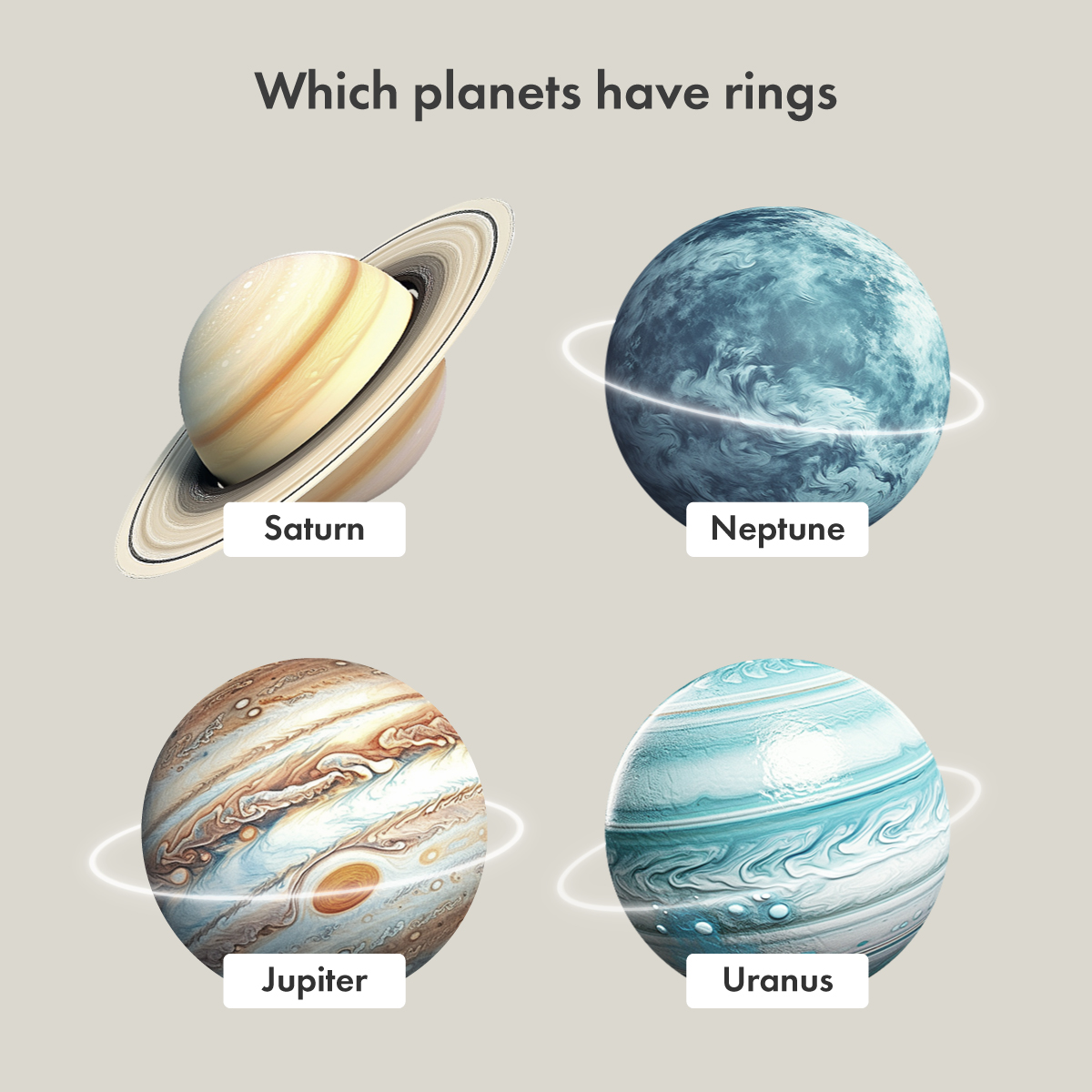
Some planets of the Solar System have rings around them, while others do not. Let’s find out what is a planetary ring, what it is made of, what are the planets with rings and why do they have them?
What is a ring in the Solar system?
A planetary ring is a flat, concentric formation of dust and ice orbiting a planet in the plane of its equator. This phenomenon is due to the fact that planets with rings are not perfectly spherical but slightly flattened by rotation, which makes the equatorial orbit gravitationally stable. It is the rotation in the equatorial plane that mainly distinguishes planetary rings from other astrophysical disks, such as spiral galaxies and young solar systems, which are formed not from an external gravitational field but from the average angular momentum of the disk itself.
There are two concepts related to how and what planetary rings are made of. They either formed from the material that remained after the creation of the planet, or they themselves are the remnants of a moon (a satellite).
Which planets have rings?
All four giant planets of the solar system, Saturn, Jupiter, Uranus and Neptune, the asteroids Chariklo and Chiron, the dwarf planets Haumea and Quaoar, and hypothetically, Saturn’s moon Rhea, have rings.
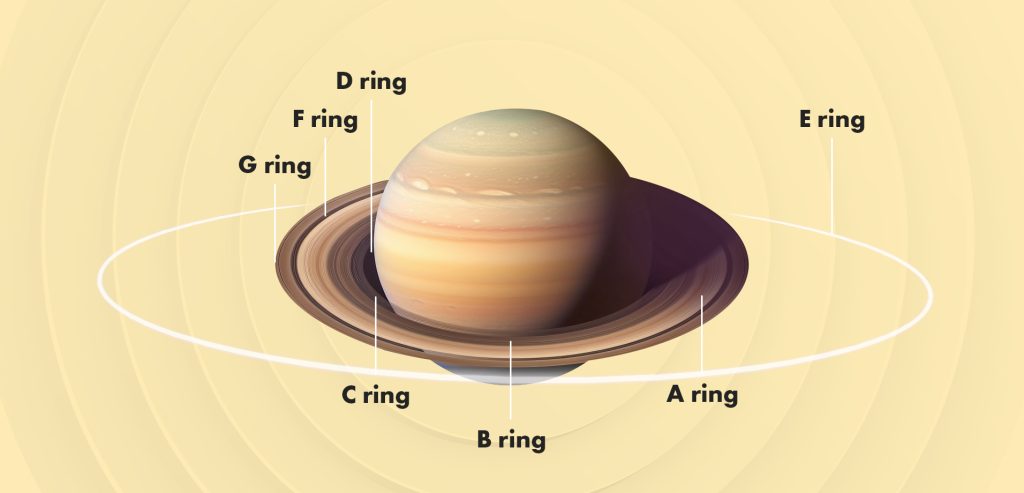
Saturn was the first planet with rings that we discovered. The rings of this planet were first discovered by Galileo in 1610. However, the scientist did not acknowledge them as rings. In 1655, the Dutch astronomer Christiaan Huygens, using a more advanced telescope than Galileo, was the first to suggest that Saturn is surrounded by a ring, about which he wrote in his work Systema Saturnium. However, the nature of planetary rings was revealed only at the end of the 20th century, with the beginning of the space probe era. The missions of the Pioneer, Voyager, Cassini, and Galileo spacecraft from 1977 to 1989 made it possible not only to confirm the presence of a ring system near Saturn but also to detect rings around the rest of the planets in this outer group.
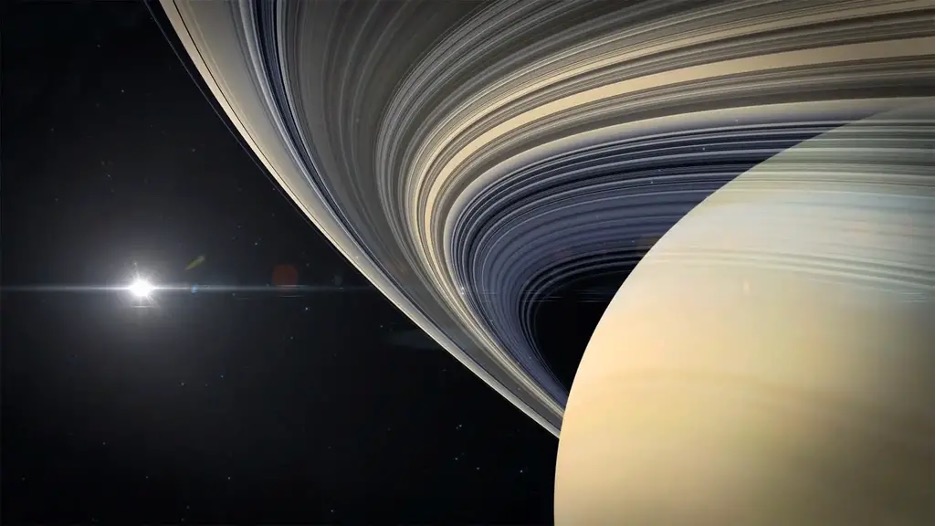
The development of space technology in the 21st century has helped to expand our knowledge about planets with rings. In particular, in 2007, data from the Cassini-Huygens spacecraft indicated the possible presence of three rings near one of Saturn’s satellites, Rhea, and in 2017 and 2023, astronomers discovered rings around the dwarf planets Haumea and Quaoar.
Why do all the outer planets have rings, but inner planets do not?
There is no exact answer to this question, but scientists identify three possible reasons:
- place of planet formation: gas giants were created in the outer part of the solar system, and the terrestrial planets in the inner, which probably protected them from collisions that could form rings.
- planets in the outer solar system have more moons (satellites) that form rings.
- larger planets have more space, allowing for the ring system to form and remain stable.
At the same time, scientists do not exclude the possibility of short-lived rings around the terrestrial planets in the past. We know that some time ago, the Earth probably collided with another planet, Theia. This could well have lead to a ring forming around Earth. Over time, our Moon formed from the rings. Similarly, in a few tens of millions of years, the collision of Phobos and Mars may give the Red Planet the ‘planet with rings’ status.
Which planet has the most beautiful rings?
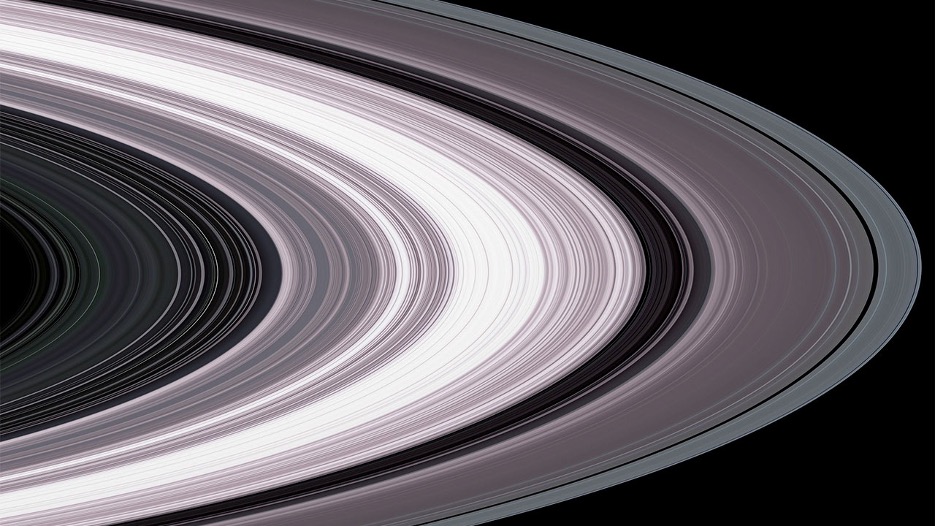
As you have probably already guessed, we are talking about Saturn. Its rings are the most majestic and their brightness allowed Galileo to observe them even with a weak telescope. And there are a lot of them — more than all other planets with rings have combined. If you are asked, what planets have over 1000 rings, feel free to name Saturn.
The ring system of this giant resembles a vinyl record, divided into main (expressive rings, denoted by letters from A to E) and dimmer ones that end with the Phoebe ring, which extends at a distance of 7.5 million miles from the planet. The main rings are very thin; in some places, they are less than 30 feet thick. Because of this, scientists believe they are relatively young by the standards of the Universe (10 to 100 million years).
Saturn’s ring will soon disappear from view in 2025
However, recent research has shown that in 2025 Saturn’s rings will disappear from view. But do not rush to get upset: this occurrence is a regular and predictable event.
Twice during each orbit around the sun, which takes as long as a year on Saturn, the rings align so that they will be almost invisible from our perspective. The most recent instance of this phenomenon occurred in 2009.
Saturn’s rings will align edge-on in March 2025. They will slowly reappear when observed through large telescopes, reaching their disappearance once more by November 2025.
An effective analogy for this phenomenon is to take a sheet of paper, hold it horizontally parallel to the ground at eye level, and then lower it a few inches toward the ground. As you do so, the upper side of the paper becomes visible. When you raise the paper back up above eye level, you can see the underside. However, the paper will practically vanish from sight as it passes through eye level.
What planet has 13 rings?

This is Uranus. The ‘Does Uranus have a ring system’ question was answered in 1977. The astronomers James Elliot, Edward Dunham and Douglas Mink discovered the first 9 rings with the help of NASA’s Kuiper Observatory. Two more were discovered by Voyager 2 in 1986 and the Hubble telescope in 2003-2005.
Ten narrow rings named 6, 5, 4, α (Alpha), β (Beta), η (Eta), γ (Gamma), δ (Delta), λ (Lambda), and ε (Epsilon) are interspersed with three broad diffuse rings ζ (Zeta), ν (Nu), and μ (Mu). The entire ring system extends approximately 35,000 miles from the planet. Narrow rings are composed of solid particles ranging in size from four inches to 35 feet, while diffuse rings are mainly large-area dust clouds. The inner rings are barely a half-mile thick in some places, whereas the diffuse outer ring of Mu is about 10,600 miles thick.
How many rings does Jupiter have
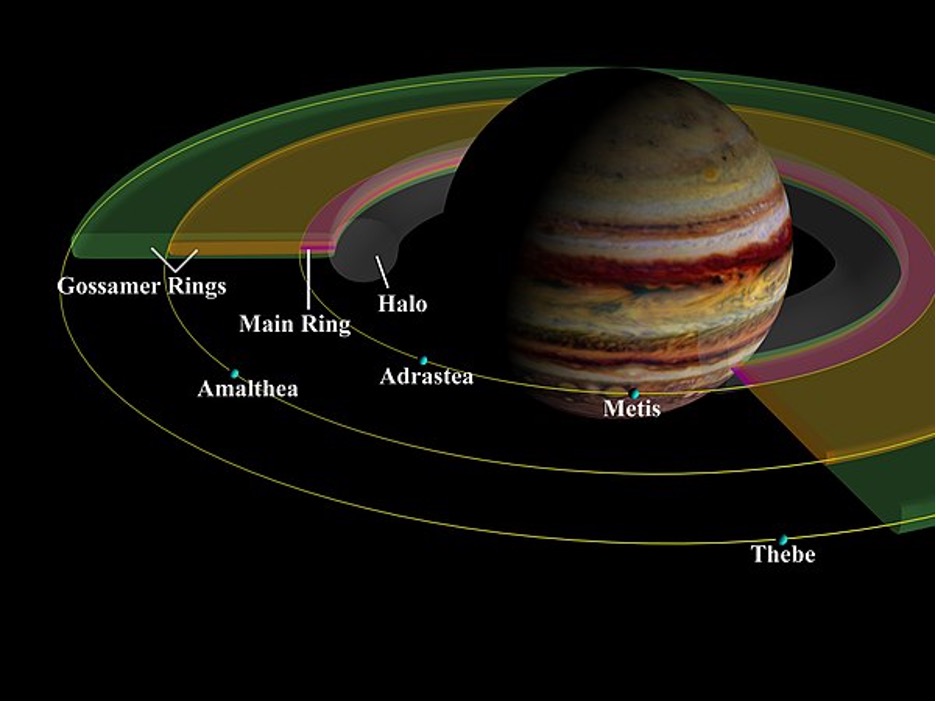
On the Internet, one can often come across the question does Jupiter have 12 rings, which can be a bit confusing. In fact, this largest of the gas giants has only 4 rings, which are difficult to distinguish since they consist mainly of dust. They are not visible with a conventional telescope, so they were discovered only in 1979 when the Voyager 1 probe closely approached the planet.
What is Jupiter’s ring system like? It includes a thick particle torus, known as a “halo ring”; a relatively bright, very thin “Main Ring”; and two wide and faint outer rings, known as “gossamer rings” (thin and transparent, like a spider’s web), named after the material of Jupiter’s moons — that form them: Amalthea and Thebe.
The rings extend 76,000 miles from the planet and fit perfectly into the orbits of Jupiter’s major moons Io, Europa, Ganymede, and Callisto. By the way, this is this proximity that prevents the rings from forming into a more complex system. The ring thickness varies from about 62 to 6,200 miles. The approximate ring age is about 1 million years.
How many rings does Neptune have?
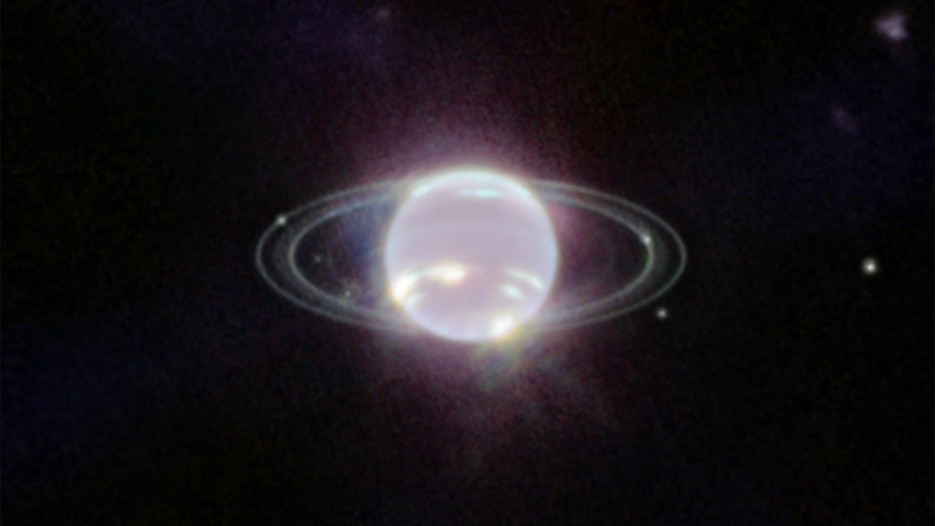
Neptune was the fourth and last of the gas planets to have rings discovered. Their existence near Neptune was first suggested by William Lassell in 1846, but this hypothesis was not given much thought or importance. Only the eclipse that occurred in 1984 forced scientists to return to the hypothesis. The final proof came five years later when Voyager 2 took pictures of the rings around the planet.
Neptune has five main rings, named after scientists who made discoveries about the planet. In order of distance from Neptune, these are Galle, Leverrier, Lassell, Arago, and Adams. The rings are dark and dusty, similar to those of Uranus, and they also consist mainly of silicates and ice. Some spots, including the arcs of the rings, have a reddish tint. Neptune’s ring system is the narrowest of all. It extends only 13,000 miles. The Lassell ring is an impressive 2,500 miles thick, while the Adams ring is only 9 miles thick in some places.
Do exoplanets have rings?
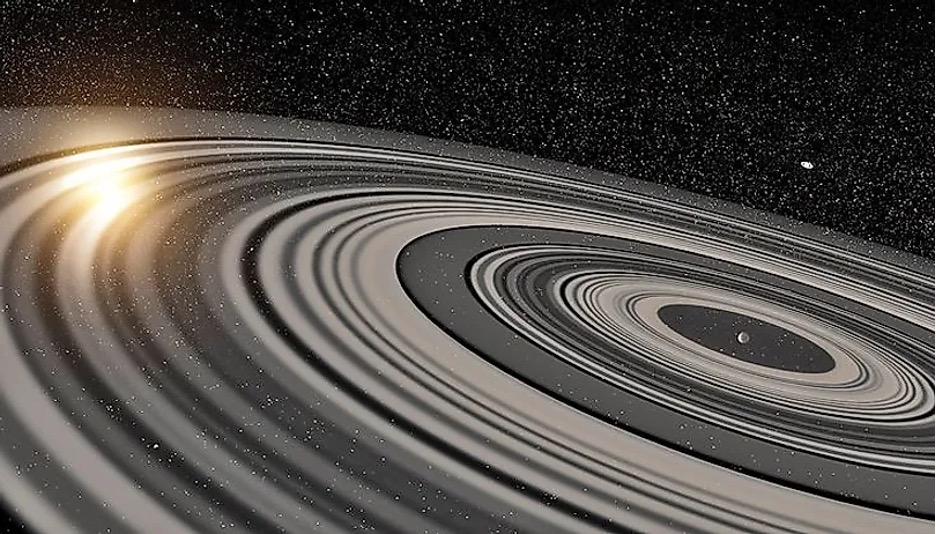
It would be logical to assume that there are planets with rings not only in the solar system but also beyond. And it is indeed so. In 2012, a team of specialists from the University of Rochester (USA) and the Leiden Observatory (Netherlands) using ground-based telescopes of the SuperWASP system discovered the gas giant exoplanet j1407b, later dubbed Super Saturn, 420 light-years away.
The planet is unique because it has a system of 37 giant rings spanning 110 million miles. This is greater than the distance from the Earth to the Sun and 200 times greater than the rings of Saturn!!
How did j1407b get its rings?
Astronomical studies suggest that Super Saturn has a satellite system that, due to the relatively young age of the planet, is still in its infancy. It is also possible that the planet has a very powerful magnetic field, which prevents the fragments that make up the rings from forming into satellites. However, gaps in its ring system may indicate that some moons are already clearing their way.
Scientists were able to establish that J1407b rotates in a fairly elongated elliptical orbit, which is why it “flies” close to its star every 11 years. However, in this case, the exoplanet rings would be under the strong influence of the star’s gravity. Astronomers have performed computer simulations to understand why the huge rings of a celestial body remain stable. According to the results, the rings around Super Saturn can only exist if they have a retrograde motion relative to the planet.
Conclusions
Planets with rings are only one of the thousands of unique astronomical phenomena that telescopes help us find. Want to discover more? Stay with Orbital Today. Our journey through the Universe is just getting started.
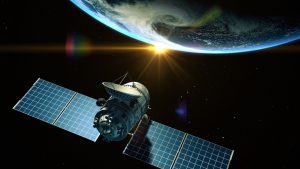

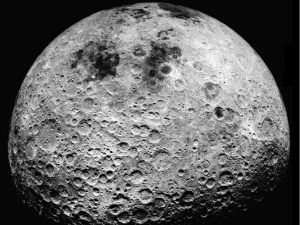
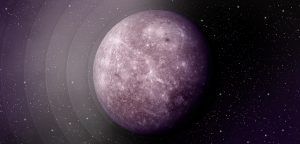


Thank you for your comment! It will be visible on the site after moderation.